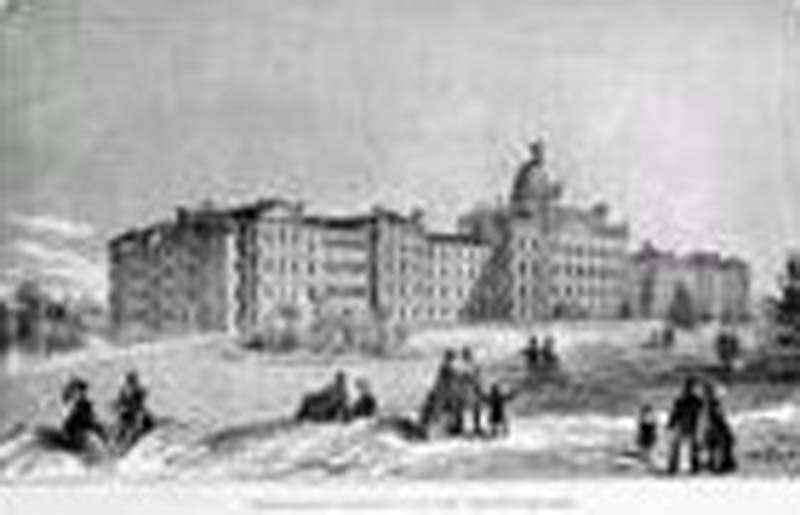The Teenaged Years: Marked Custody Transition

Toronto Asylum.
Canadian Illustrated News, Vol.1, No. 29, Page 456. Reproduced from Library and
Archives Canada's website Images in the News: Canadian Illustrated News.
1 |
2 |
3 |
4
By the late 1870s there were four public asylums in Ontario: Toronto, London, Kingston, and Hamilton. Many of these institutions had experienced the practical effects of legislative developments throughout the 1860s and 1870s with regards to inspection procedures, jurisdiction, and particularly admission requirements. Revisions continued throughout the 1880s, particularly to the act regarding Asylums and the custody of Insane Persons (PDF file, requires Adobe Acrobat Reader to view), which significantly altered the placement of patients within the asylum system.
Prior to regulations established in the early 1870s, only one doctor was required for certification of insanity. This was a system which was rife with holes and misdiagnosis independent of professional scrutiny. In 1873, due in part to the influx of patients who were victims of this misdiagnosis, legislation was passed to ensure collective medical agreement. Initially this legislation required three medical practitioners to certify mental illness with two witnesses each. By 1887 this was changed yet again to only two. A balance was eventually found between carelessness over diagnosis, and medical red-tape.
The ability to transfer prisoners from local jails to the asylum continued and resulted in close cooperation between local police and asylum superintendents and staff. Beyond transfer, the jail also acted as an intermediary between the committal process and the asylum for those in situations of destitution. This was where medical evaluations could be secured, a trend which would continue into modern times.